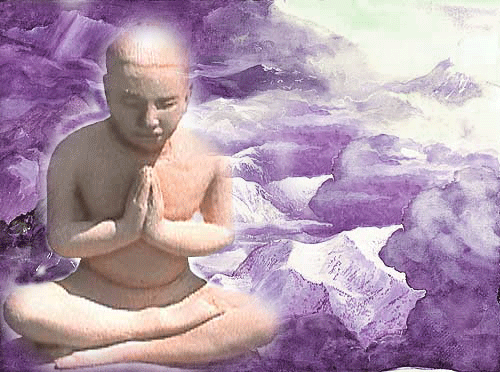WHAT IS MEDITATION ?
SPECIAL INSIGHT, VIPASYANA (vipassana)

Vipashyana is defined as: the correct discernment of the object of meditation, coupled with single-pointed concentration: a combination of analytical meditation and calm abiding. To develop it, we need to learn to analyse the meditation object. But not only conceptual; it is a more fully understanding the object. Our conceptual understanding will eventually turn into direct, non-conceptual experience.
As the Buddha said:
“Like fire arises from two pieces of wood rubbed together, so does analytical wisdom arise from the conceptual state. And just like the fire increases and burns away all the wood, analytical wisdom increases and burns away all conceptual states.”
2 Types of analytical meditation are distinguished:
To transform our attitude. For example, by understanding the problems and misunderstanding of anger, we can reduce and ultimately eliminate anger.
Analysis of the meditation object to understand and perceive it directly.
When doing analytical meditation, never take for granted the first quick answer that comes up. When you ask “why, how and when” again regarding your initial answers, you may discover the “real”, underlying answers. Also, the answers should not only come just from the intellect, also check your feelings and emotions, as long as you don’t get caught up in them..
An example: in death meditation you can think of death. When you ask, “Will I die?” the immediate answer will be “Yes”, and it seems you are finished. But take some time to check with yourself if you really live your life consciously in the realisation that you can die any minute. Asking yourself, “How would it feel to die right now?” will get you into another level of the mind. Ask, “How will I die?” and “How will I feel?” and the simple question about death becomes intensely acute and serious.
Then ask for example, “Why will I die?” and you may answer, “Negative karma”. But rather than giving just the textbook answers, check how these things feel: “What is negative karma really? How does negative karma feel? Do I really believe in karma, and do I act that way?” etc.
Analytical meditation is not just about giving the instant logical answers from the books, but verifying what your OWN answers are. For me personally, often the real answers appear to be stowed away in emotions and is hiding behind the logical straightforward answers.
After doing the analysis in a very slow and calm way, one should single-pointedly focus on the conclusion made in the end, without analysis, just “look at the conclusion”. This really works to let your own conclusions “sink in”, and make them part of your understanding and wisdom.
As example using above meditation, you may conclude that you are really not so sure whether you believe in karma. The conclusion may well be something like: “I have to check about karma more” or “I need to check why I often don’t act as if I believe in karma”. Personally, this is the kind of stuff that makes me more sensitive and aware about my state of mind, and it stimulates to meditate more on the subjects of philosophy and psychology.
For the complete text of “Mindfulness In Plain English”, a well-loved ‘how-to meditate’ book on Vipassana by Venerable Gunaratana, click here on this page of realization.org.
WHAT IS MEDITATION ?
– Introduction – Working with the Mind
– Calm Abiding, Shamatha
– Special Insight, Vipasyana
– Combining Shamatha and Vipasyana
– Source : buddhism.kalachakranet.org




